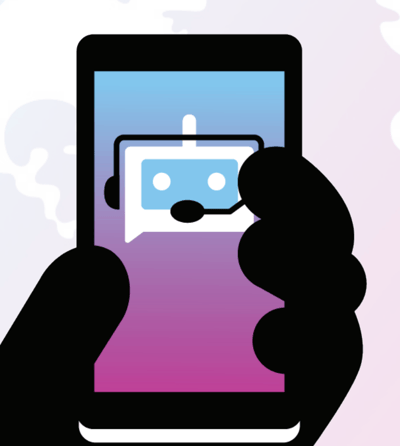Regulatory Considerations for Video and Screen Sharing in the Contact Center
Raise your hand if you’ve been using video a lot more than before. Fact is, we’ve all been chatting with friends and family, collaborating with colleagues at work, interviewing for jobs and promotions, and possibly even experiencing telemedicine for the first time. For most of these scenarios, we’ve chosen to turn on our camera. We can also decide on whether we want to be recorded. And there’s some implied trust about what and how any recordings might be used in the future.
The pandemic has seen video explode, and your contact center is no different. You may even have started using various standalone video services to complement the contact center communications channels already offered. However, as a contact center leader, you’ll have very little control over who uses those video services, how they use them, and what becomes of any recordings. You also lack any reporting integrated alongside your other contact center channels, making it very difficult to gauge effectiveness.
Vonage Visual Engagement: Video and Screen Sharing in the Contact Center
Vonage has lots of experience with video applications. This follows the acquisition of TokBox back in 2018, who had been in this space since 2007. Vonage is now building video and screen sharing into Vonage Contact Center, using their own technology. Along with this comes a responsibility to provide customers with the tools to ensure that they adhere to the various regulations and best practices for video when used in the contact center.
 GLOBAL RESEARCH STUDY
GLOBAL RESEARCH STUDY
Contact Center Scenarios for Video and Screen Sharing
It’s always helpful to start with a question. Here are key scenarios to consider:
Does your supervisor have control over which agents can utilize video and screen sharing in the contact center?
Perhaps you want to reserve this for agents with a certain amount of experience, or agents who have expressed an interest in using video, or some other criteria. Some agents may have personal reasons for being completely averse to video sessions. You need more than an “everyone on or off switch.”
Do your agents have to go to a completely separate application to start a video and screen-sharing session, or can they do this from within their usual contact center application?
Video sessions between the contact center and your customers need to be very straightforward and easy to use, with no room for error.
Can you be sure that your customers and prospects are all over the age of 18?
There are very strict rules in place, particularly around the recording of video sessions with minors.
Have you given consideration to the environment your agents are working in, whether in the office or home-based?
You need to make sure agents are dressed appropriately and that their background is as professional as possible.
Are you able to centrally control whether video and screen-sharing sessions are recorded, and play the appropriate warning message to callers?
You’ll probably want to use video recordings for training purposes, so that should be incorporated into the message as well.
Do you allow your agents to stop and start recording at will, or do you want to be sure that once a video recording has started that it continues uninterrupted until the end of the session?
No two calls are ever alike. Some are obviously more complex than others, some may involve disputes or other issues where you’ll want to ensure the whole session is recorded.
What happens to videos and screen shares once the interaction has ended?
It’s important to think of storage and retrieval. Are videos and screen shares stored centrally, with contact center staff only able to access them through a tightly controlled viewer? Or do you have them available as downloadable MP4s that could be shared inappropriately?
Can you control what gets recorded, where it gets stored, and who has access?
Financial organizations, for example, work with highly confidential documentation. In this case, an advisor may invite clients to review materials together on a screen share—and then guide them through a form-filling exercise. Of course, any credit card information would be protected by a secure transaction service, which should already be part of your contact center. Control, to protect all parties, is imperative.
What about the storage implications of large video and screen-share files?
Carefully consider if you’re able to separate the audio and video streams, and set different rules for retention. For instance, you might want to keep the video file for a short period of time, but keep the audio for a longer period and apply speech analytics to uncover key insights.
Stay tuned to learn about these Vonage Contact Center features—Visual Engagement, Video, and Screen Share. Check out the latest on these great new tools.
And be sure to read our previous blog on this topic.

